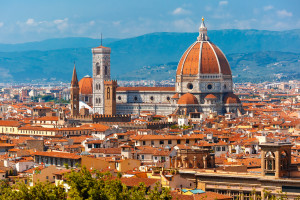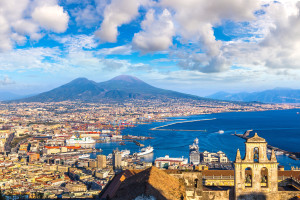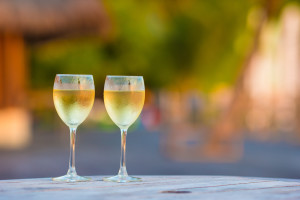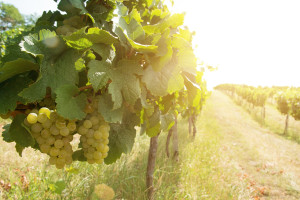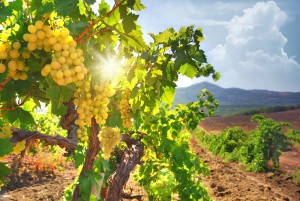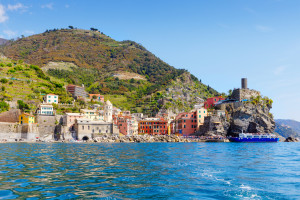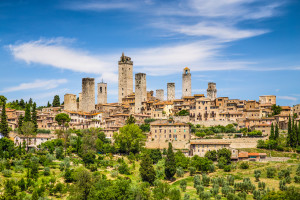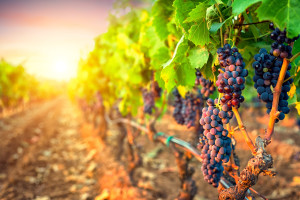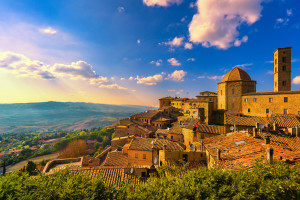Today we have a guest post from a frequent contributor that we know as Candi, CSW. Read on to see how Candi learned to appreciate unique Italian wines.
The wine geek in me has several bucket list destinations. Places that I want to visit when the time is right and before aging overtakes my ability to travel with enjoyment. At the top of the list is Italy. Followed by Spain and Chile. Back to Numero Uno.
The nearest major city, where I do my Somm volunteer gigs, is second tier in terms of population, density, etc. Not at the level of New York, Atlanta, Dallas, Washington D.C., or Boston. But our city was recently a stop on a major tour sponsored by the Italian Ministry of Economic Development and the Italian Trade Agency, along with the Italian wine industry.
In my opinion, we live in difficult economic times. And a few European countries that have significant challenges appear to be engaging in this type of effort to promote their wine industry. I attended a Spanish event two years ago.
Two months ago, the word went out in the local Somm community. Italian event coming! A big “get”, to use a journalism term. Or a “score”. Or just recognition that our community is becoming more established as an American wine industry destination. And the message to us was clear: please attend. We need a large head count. So I checked event date and time with my beloved Designated Driver (i.e., husband). All clear.
Hmmm. Italian. Trade only; complimentary. Bucket list destination. It doesn’t get much better than that. Ticket obtained.
My typical pre-event planning includes using the list of vintners and, if possible, wines to be poured to establish a target list. My method has worked very well for me lately. By targeting 15-20 wines to taste, with a break in the middle, I am able to enjoy and evaluate those wines before palate fatigue sets in. Further, I am being safe, responsible, and professional.
For this event, I had a list of vintners. That’s it. And searching wines produced, much less typical prices per bottle, was challenging. I learned at the event that this was because about 40% of the vintners do not currently import their wine into the United States. Of course, some were looking for distribution. But that 40% were truly bucket list. They were bringing Italy to me. How considerate!
Event day. Lovely sunny weather, indoor venue in an area I’d never visited. Nice facility, nice layout. In the room’s center, the vintners were arranged by number in the brochure we then received. And, fortunately, there was now a list of each wine to be poured by each vintner. Geek heaven.
A first for me: at my initial pour, the vintner suggested trying the whites at various other tables before coming back and trying the reds. That made sense to me, as I know that many Italian reds are big, masculine, up-front, choose your term. Starting with or mixing reds could indeed diminish my appreciation of the whites. And I’ve had a tendency to focus on Italian reds in the past. Why not try another way?
The end result: I developed such an appreciation for the white wines that they became a great learning experience for me. I’d say at least 40% of the wines tasted were Bianco, 10% Rosato (my bridge wines) and maybe 50% Rosso.
The Biancos, as a group, seemed to have more purity and depth than my prior experience. Here are a few impressions, by varietal.
My top choice: a 2017 50/50 blend of Greco and Fiano, IGT Campania. A creative blend. Greco seems to add up-front aromas & impact, while Fiano contributes further acidity. There is definite complexity. Imported.
Second choice: Greco di Tufo, Campania DOCG: poured 2018 En Primeur. Aroma drew me in: distinguished that as more complex than, for example, typical Fiano. I will certainly seek out examples to confirm. Almost no traffic at that particular table, which meant more time with the vintner. Not imported.
Vermentino, IGT Tuscany: poured 2018 En Primeur. Dry, no oak, definitely more complex than previous versions tasted. Not imported.
Bellone, IGT Lazio: poured 2018 En Primeur. Pleasantly dry, distinct minerals, maybe bit of citrus. Friendly and interesting. Apparently a white clone of a red grape. Imported.
Falanghina Campania DOC: poured 2018 En Primeur. 100% Falanghina. Deep straw color, clearly darker than the Fiano which was harvested earlier. Clear floral and citrus aromatics, citrus more defined on the palate. Not imported.
Fiano Campania DOC: poured 2018 En Primeur. 100% Fiano. Striking clarity, aromas and palate show a hint of complexity, but definite appeal. Same vintner as the Falanghina. Not imported.
Malvasia Puntinata Lazio17 DOC. Also known as Malvasia del Lazio. Reminded me vaguely of Viognier. White flower aromatics more dominant, followed by citrus. Both noted on palate, where citrus made more of an impression. Interesting that some websites describe Viognier as a dry white floral! Not imported.
Brut Rosato: poured 2018 En Primeur. Per the vintner, 85% Lambrusco, 15% Pinot Noir. My first Lambrusco, and a lovely introduction. Deep rose color, mid-size bubbles. Aromatics are fruit-forward, which carries through to the palate. But there is definite acidity and, as is my personal preference, it is indeed dry. Maybe I can credit the Pinot Noir for that impact; the vintner delivered. Imported.
Rosato Sicila DOC: poured 2018 En Primeur. Per the vintner, 100% Nero d’ Avola. Another deep pink wine, this time a still wine with good clarity. Aromatics of fruit and citrus in balance. Confirmed on palate. A very nicely done dry Rose’ that makes no attempt to imitate Provencal versions. Imported.
After the whites and rosatos, it became apparent that it was time for a break. I had been carefully hydrating, with still bottled water and a few sips of Italian sparkling water as well. But a sit down and pause to take further notes and be safe was required. I know when that time occurs.
This event had a feature I’d never seen before and I wish all tasting events had. Along the sides of the room, there were several tables with chairs. Intended for participants to use. That was a way to encourage people to take a break and to promote tasting responsibly. I ended up sharing a table with 3 others, and for the second portion of the tasting, it rather turned into a fun little cocktail party! One of us would go get a sample, then share the glass for an aromatic check with others. If they were interested, they could get pointed to a sample. I chose most of the reds, after my break, by their recommendation.
A few key Rosso impressions:
My top choice: a Tuscan Blend DOCG 2013. Sangiovese, Cabernet Sauvignon, and Merlot. Since the percentage of grape usage was in that order, it worked for me as I am a fan of the first two. A balanced, complex wine that stood out even though palate fatigue was imminent.
Second choice: A Chianti Gran Selezione 2015. This was my personal favorite of 3 Tuscans poured by the vintner. Since I prefer the sour-cherry impact of Sangiovese, this may be why the wine outshone the Super Tuscans.
A Primitivo di Manduria Riserva DOP 2015. Per the vintner, 100% Primitivo. They were pouring several Primitivos. I wanted to try the one they chose as the least similar to American Zinfandel. I’m one who believes there is a slight genetic difference and I wanted to test my theory. My impression was that this wine was distinctly drier, without any of the jammy notes I have often noted in a Zinfandel. The Primitivo would clearly pair well with red food, not so much with the beef and pork we often enjoy with American Zinfandel.
Brunello di Montalcino DOCG 2014. 100% Sangiovese. It was a goal to taste Brunello. Solid aromatics, so distinct that other tasters at the table went to try. Sour cherry, clearly astringent and tannic on palate. Long, long finish.
Due to targeted tasting I missed the Aglianico Taurasi and Aglianico Campania. Along with a Cesanese and an Amarone. And many other Rossos. For me, the whites made such a favorable impact that it was well worth it. There will be other Rosso opportunities. I hope.
A few overall impressions: both Bianco and Rosso blends were good examples of each grape adding its unique contributions. Whether fruit, acid, tannin, structure, aromatics or a combination. And, I was attracted to mid-priced wines more than the most expensive ones; prices were discovered after the tasting. Whether this is palate preference or my frugal soul, it doesn’t matter to me. My palate is my source of enjoyment.
Further, I have a practice of 3 to 4 sips of water for every sip of wine. I had a second wine glass that I kept filled with the Italian sparkling water during my tasting of the Rossos. This was smart because the carbonation naturally reduced the amount of wine consumed. I will continue that experiment in the future.
As I learned from the distributors I met, the best toast is Salute! So Salute! And Cheers to Bucket List Bianco!
